Moshi – History, Economy, Climate, Politics and More
Moshi is a municipality in the northeastern part of Tanzania and the capital of the Kilimanjaro region. The municipality boasts a population of 201,150 people as well as a population density of approximately 3,409 people per square kilometer as of 2017. The municipality has a population of about 184,292 people according to the most recent official census in 2012. The municipality is located on Mount Kilimanjaro’s lower slopes, with the mountain being Africa’s tallest peak and a dormant volcano. The name Moshi is said to be derived from the smoke that arises from a neighboring mountain. The municipality is Tanzania’s smallest by area, with only 59 sq kilometers (23 square miles).
Basic Information
- Moshi currency: Tanzanian Shilling
- Moshi Time: GMT+3
- Moshi country: Tanzania
Administration and History of Moshi
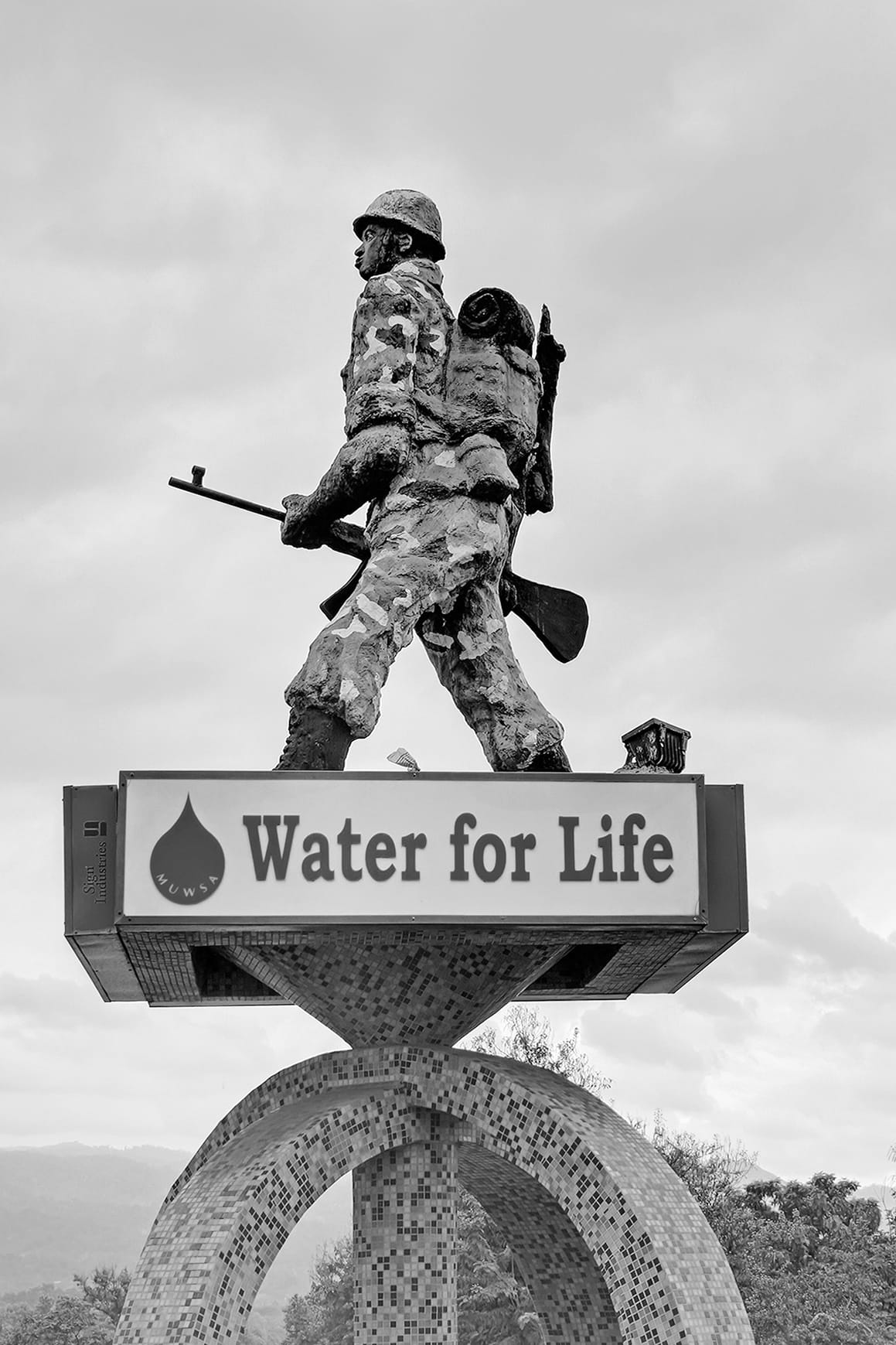
In 1893 August, Germany constructed a military camp in the Moshi region (Neu-Moschi). In 1912, the northern line railway arrived in Moshi.
In 1956, Moshi has designated the town status. Tanzanian legislation designated it as a municipality in 1988, but as of 31 October 2014, the procedure for submission of its application to be declared a city was nearing completion.
Moshi is split into 21 administrative wards, which are further subdivided into sixty hamlets.
Economy of Moshi
As the region’s capital, it serves as a hub for government activities, banking, trade, and tourism. Moshi was formerly a crucial railway town, a hub of banana production, and a region for commercial production of pyrethrum in the 1st part of the twentieth century.
Tourism in Moshi
Moshi is a popular tourist destination on Tanzania’s northern safari circuit. Kilimanjaro National Park and Mkomazi National Park as well as Lakes Jipe and Chala are all nearby tourist attractions. The region also has waterfalls, tropical forests, and natural springs. Tours to the Serengeti, Tarangire, Lake Manyara, and Arusha National Park, and the Ngorongoro Conservation Area may also be booked from Moshi. There are numerous hotels and entertainment centers in the city.
KiliFair, an annual fair designed to promote and exhibit enterprises situated in the Moshi Kilimanjaro area, is an international tourism and industry expo. The fair encompasses the feel of a tourist sector commercial networking event combined with a Moshi community fair to attract families, locals, and ex-pats. Karibu Fair (TATO) and Kilifair, two popular tourist trade shows, have agreed to merge to form the largest and most significant tourism trade show in the East African region. During the four days of the fair, the newly created “Karibu/KiliFair” is expected to attract 350+ exhibitors from Central and East Africa, 300+ foreign semi-hosted and hosted buyers, and about 4000 visitors. Starting in 2018, the fair will alternate between Arusha and Moshi on a yearly basis.
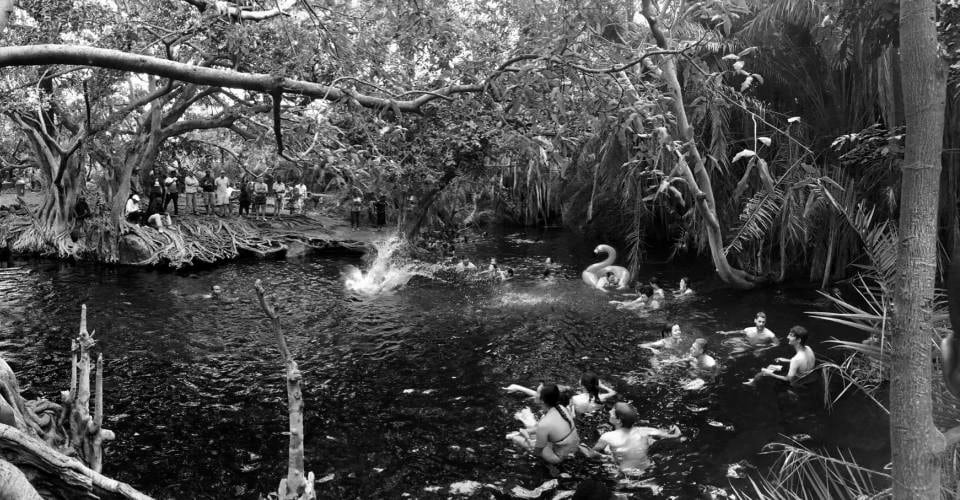
- Timing: Every year, at the start of June ( as from 2015).
- Venues: Moshi- Ushirika Stadium, Arusha– Friedkin Recreation Center – TGT.
- Upcoming event: The next event will take place from June 7th to 9th, 2019 in Arusha
Manufacturing
Bonite Botters Ltd, one of Tanzania’s 3 Coca-Cola bottlers, is based in Moshi. A production factory for Serengeti Breweries, a Breweries firm in East Africa, is also located in Moshi. TPC Ltd, the owner of one of the country’s oldest and largest sugar cane plantations, has a sugar manufacturing factory just to the south of Moshi. In the food packaging and dairy industries, there are a number of medium and small-sized production facilities.
Agriculture in Moshi TZ
The major crops cultivated on the upper slopes of Mt Kilimanjaro, bananas and coffee, do not thrive in Moshi due to its lower altitude and drier environment. The neighboring territories of the Moshi district are renowned for their large beans and maize farms, which are only harvested once a year during the lengthy rainy season (referred to as “Masika” in Swahili language). In addition, 20 km (12 miles) south of Moshi, the Tanganyika Planting Company runs a major sugar cane plantation and a company town.
In 1893, Roman Catholic missionaries brought Arabica coffee to the Moshi region. The Kilimanjaro Native Co-operative Union was founded in 1929 by Charles Cecil Farquharson Dundas, the district commissioner. Its goal was to allow Chagga coffee producers to compete on equal terms with European growers in global markets. KNCU gathers coffee from around 150,000 small-scale producers through 96 village groups. KNCU trades approximately 5,250 tons of Arabica coffee, or roughly 11% of national output, and handles between 50% to 70% of the coffee cultivated in the region.
Education in Moshi Tanzania
Moshi, like the rest of Tanzania, has universal elementary education. The Kilimanjaro Region, which entails Moshi, boasted the 2nd highest and 3rd highest female and male literacy rates respectively among Tanzania’s then-existing 26 regions, as per the 2010 Tanzania Demographic and Health Survey. When compared to any of Tanzania’s 128 districts, the Moshi urban district boasted the highest literacy rate for those aged 15 years or above, as per the 2005 Tanzania Poverty and Human Development Report.
Moshi is home to a variety of educational institutions such as the Kilimanjaro Christian Medical College (KCMCo), Mwenge Catholic University (MWECAU), Stefano Moshi Memorial University College (SMMUCo), Moshi Co-operative University (MoCU), Kilimanjaro School of Pharmacy (KSP), Tanzania Training Centre for Orthopaedic Technologists (TATCOT) and College of African Wildlife Management (CAWM),.
Tumaini University has a campus at KCMCo. It began in 1997 and now provides a variety of medical courses. The KCMCo complex houses the college, which is roughly 6km (3.7 mi) from Moshi.
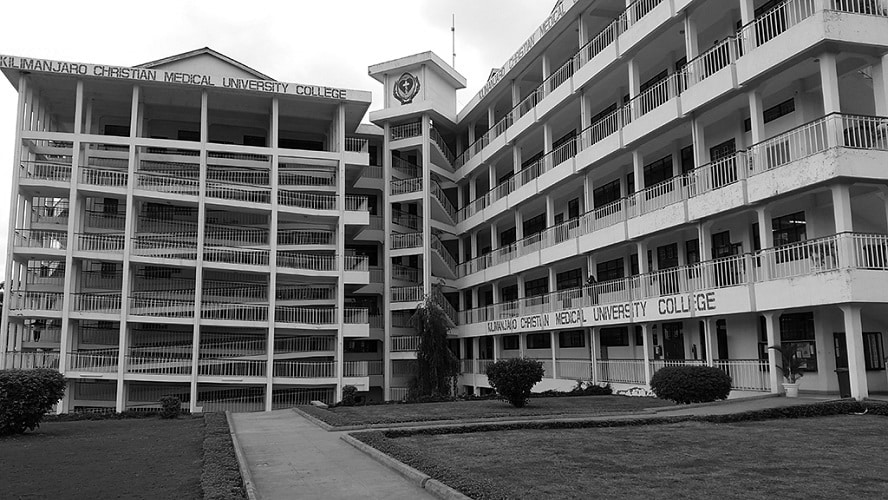
Tumaini University also has a campus in SMMUCo. Mwika Lutheran Bible College and Masoka Management Training Institute collaborated to create it. It is a multi-campus university college affiliated with the Evangelical Lutheran Church – Northern Diocese. SMMUCo now owns campuses in Mwika, Moshi, and Masoki, with plans for Siha, Machame, and Karatu underway.
MWECAU was once a constituent institution of Tanzania’s Saint Augustine University. Moshi lies 10 km (6.2 mi) to the north of MWECAU.
The Sokoine University of Agriculture has had the Moshi Co-operative University as a constituent institution from May 2004. It was once known as Ushirika College and is situated on Sokoine Road and is Tanzania’s oldest training college. Moshi Co-operative University has 43 years of experience in cooperative management, co-operative accounting, and rural development fields, and has recently expanded to other expertise in cooperative development, auditing, marketing, management, and accounting, which is being used in various institutions in Tanzania and abroad. Moshi Co-operative University has grown from a 150-student institution offering customized courses to a 1500-student university.
Mweka College is the popular name for CAWM. It was founded in 1963 as a pioneer school for the training managers of African wildlife in response to the Arusha Manifesto (1961). Although the majority of CAWM students are from the SADC area, the College welcomes any students interested in African wildlife management.
The Saint Luke Foundation, a registered trust, owns KSP. It was established to provide a wide range of services to a Tanzanian population that suffers from significant deficits in health and pharmaceutical systems. KSP is now the only school that offers competency-based training up to the diploma level for various levels of pharmaceutical cadres.
In June 1981, TATCOT was established in Moshi with the human, financial and material resource assistance of the Tanzanian and German governments. TATCOT is an international training center in Africa that offers courses in orthopedic technology to students from all English-speaking nations in Africa as well as other interested countries. These courses were created to educate professionals who offer technical assistance to persons who have amputations and other neuromuscular diseases such as club foot, cerebral palsy, poliomyelitis, trauma, and paralysis. To do this, Professionals are equipped with the information and expertise to offer orthoses prostheses, supportive seating, and wheelchairs to disabled persons.
Moshi is also home to a number of secondary schools. Moshi secondary, Moshi technical, J.K Nyerere, and Mawenzi Secondary Schools are government institutions. Northern highland, Majengo International School Moshi, and Kibo Secondary Schools are private schools. Furthermore, each of Moshi’s wards has a community-run secondary school, such as Kiborilini and Rau Secondary Schools.
In 1956, Mawenzi Secondary School was founded as the Indian School of Moshi. It is currently a thriving 1,100-student school. All of the A-Level students are Tanzanian female boarders who come from all across the country. At the A-Level level, the school focuses on History, Geography, English, and Kiswahili. For junior students (Forms 1–4), the school works on a two-shift schedule. Except for French and Kiswahili, all topics are taught in English. Since 1987, Mawenzi School has maintained a relationship with Scotland’s Buckie High School. Many students and instructors have traveled severally between Scotland and Tanzania.
The International School of Moshi (ISM) was founded in 1969 to fulfill the expatriate and local populations’ needs. On its two campuses in Arusha and Moshi, ISM has around 400 students from over 40 different countries. The Moshi campus includes around 190 students from 25 different countries, including 90 borders, and provides a wide range of courses from early childhood through the International Baccalaureate Diploma. As from 1977, ISM has been an International Baccalaureate World School. In Tanzania, ISM is among the only two world schools that offer primary, middle, and diploma programs. In 2019 August, ISM became the world’s eighteenth United World College, renaming itself UWC East Africa. There are also English medium schools, such as the Eden Garden schools, that offer primary, pre-primary as well as secondary education.
Medical Care in Moshi
The Kilimanjaro Christian Medical Centre (KCMC), a zonal referral hospital, is the area’s primary private hospital. This facility has about 450 beds and serves a population of more than 11 million people. KCMC was formed in 1971 March by the Tanzanian Good Samaritan Foundation.
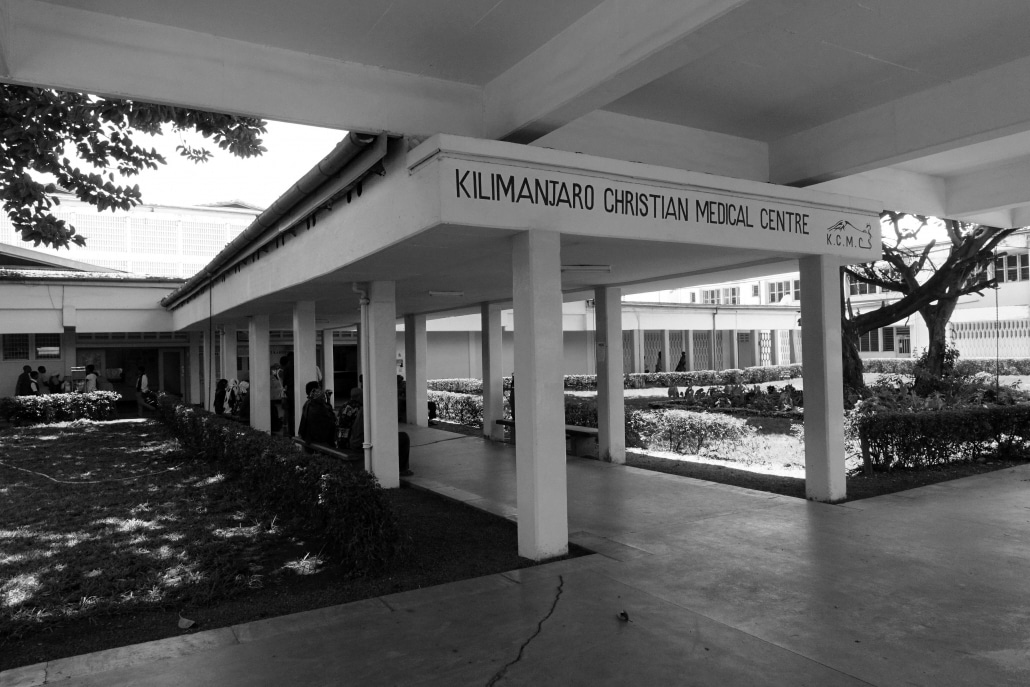
The Kilimanjaro Centre for Community Ophthalmology (KCCO) is located close to KCMC and was created in 2001 by Dr.Susan Lewallen and Dr. Paul Courtright. In 2007, numerous people and non-governmental groups contributed to the completion of a new three-story facility for KCCO. The KCCO is “committed to the eradication of preventable blindness through sustainable and repeatable community ophthalmic services through training, programs, and research.” The KCCO possesses an “official memo of understanding… with the Ophthalmology Department and the Kilimanjaro Christian Medical College in which it shares or assumes responsibility (subject to certain financing grants) for several teaching activities, inclusive of running seminars and workshops, supervision of the… [Ophthalmic Resource Centre for Eastern Africa], conducting clinical and epidemiologic research and acting as in an advisory capacity for planning services for the Eye Department.”
The Kilimanjaro Clinical Research Institute (KCRI), which serves as KCMC’s research arm, is also located in Moshi. In 2009, the Kilimanjaro Clinical Research Centre (KCRC) became the Kilimanjaro Research Institute (KCRI). The KCRC was founded in 2006 with the assistance of the government of the Netherlands as part of the Netherlands-African Partnership for Capacity Development and Clinical Interventions Against Poverty-Related Diseases (NACCAP).
The Mawenzi Regional Hospital, which began as a tiny dispensary for treating German soldiers around 1920 and developed into a hospital in 1956, is Moshi’s major public hospital. Although the hospital has around 300 beds, it is badly underfunded. The Government and Private Hospitals Inspection Committee of the Ministry of Health and Social Welfare halted its surgical services indefinitely in late 2010. “While conducting our inspection, we visited Mawenzi Hospital’s theatre room and which we found to be exceedingly unclean, with no proper ventilation, a circumstance that is harmful to both the patient and his/her caregiver,” stated the committee’s chair, Dr. Pamella Sawa. A Care and Treatment Centre for HIV/AIDS patients is located within the hospital. In collaboration with Norway, the hospital‘s physical therapy department offers a student learning program in which physiotherapy students in the 2nd and 3rd years from Norway come to the hospital as apprentices for a short period.
Transportation in Moshi
Roads
TANROADS highway T2 connects Moshi to other Tanzanian cities. From Moshi, many bus companies provide trips between cities. Local buses are available for intracity transport.
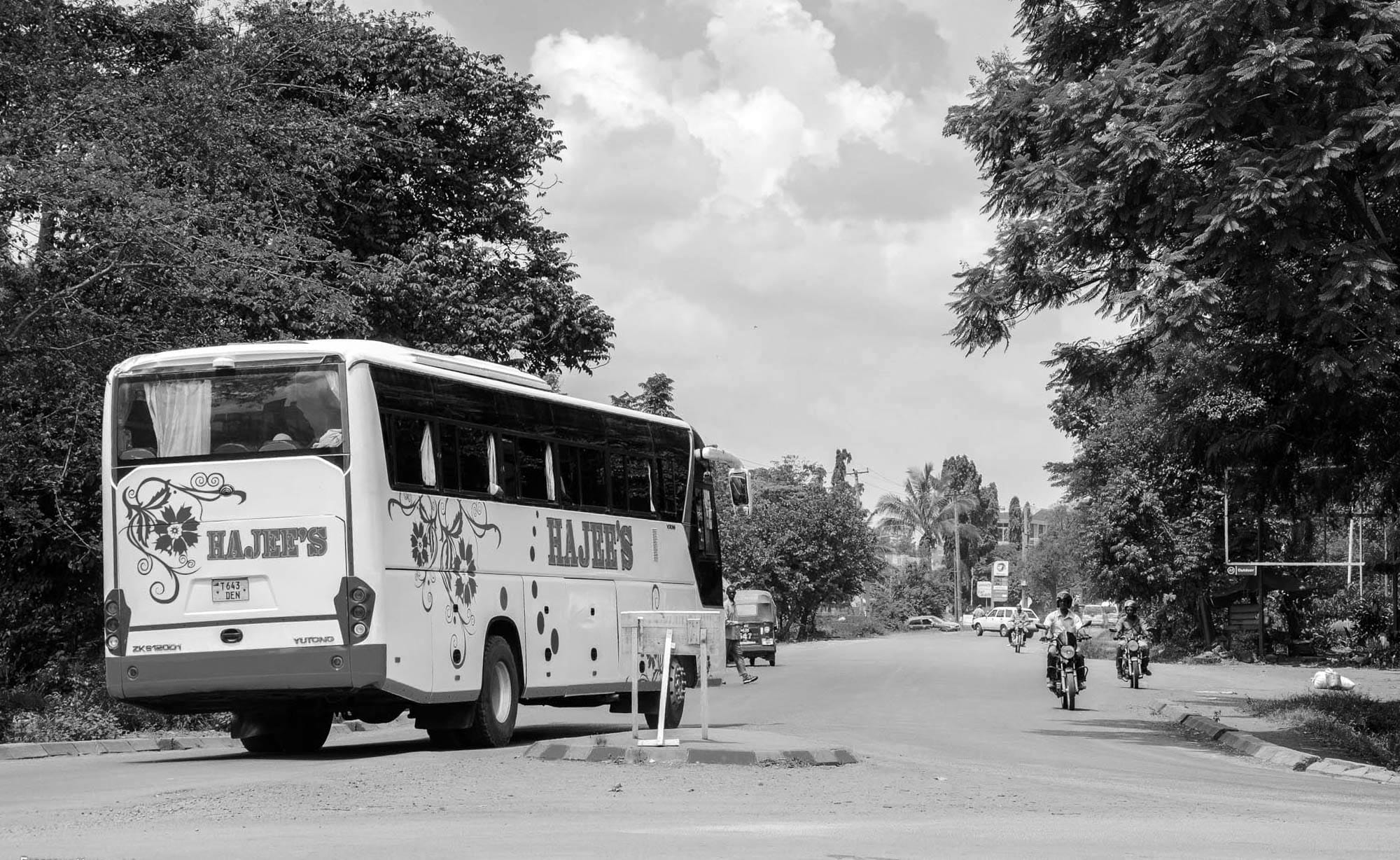
Air
Kilimanjaro Airport Development Company operates the Kilimanjaro International Airport, which is situated about forty kilometers along the Arusha-Moshi highway. Some of the domestic and international airlines scheduled at the airport are Qatar Airways, Turkish Airlines, Precision Air Services, Kenya Airways, Ethiopian Airways, Fly540, RwandaAir, Condor, and KLM. A tiny airport (Moshi Airport) is located around 5 kilometers from the center of the city. The airport mostly services private and chartered planes.
Rail
Moshi is served by the Tanga Line. The railway transport cargo primarily cement from Tanga to Arusha and Moshi. There are plans in place to bring passenger service back to the line.
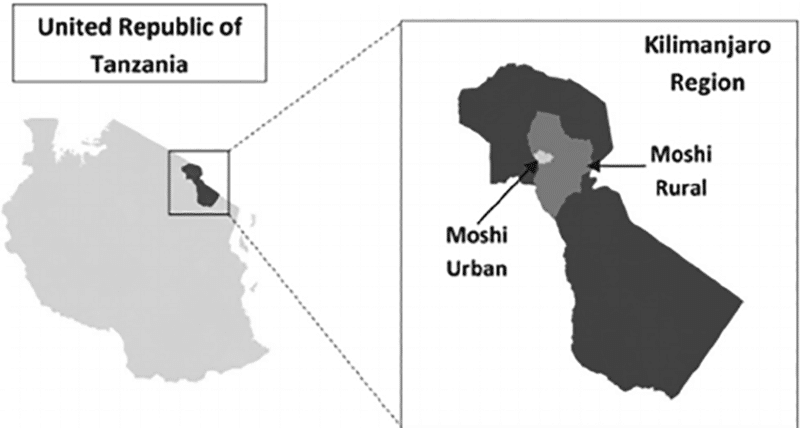
Traveling to Moshi Tanzania
There are different ways to travel to Moshi Tanzania.
If you’re traveling Arusha Moshi, you can take a car. The distance from Arusha to Moshi is 82km approximately. You can also opt for an Arusha to Moshi bus.
If you’re traveling from Dar es Salaam to Moshi, then it’s faster to take a plane. The Dar es Salaam to Moshi flights last 1hr approximately. You can also opt for a Dar es salaam to Moshi bus. The distance Dar to Moshi km is 434km.
The distance from Kilimanjaro airport to Moshi is 41.4km.
Top Moshi Cultural Tours
There are multiple moshi tours. Here are some of the best:
- Materuni Waterfalls & Coffee Tour from Moshi
- Kikuletwa Hot Spring Day Tour
- Bike day trips from Moshi
Sports and Special Events
Running Competitions
Since 2002, Moshi has hosted the Kilimanjaro Marathon, the country’s greatest sporting event, which takes place every year at the end of February or the start of March. The Association of International Marathons and Distance Races is a member of the race. Other than promoting tourism, the event also promotes athletics in Tanzania, with the Athletics Tanzania, Tanzania Tourist Board, and the International Association of Athletics Federations all lending their support.
In 2015, three hundred and thirteen people completed the 42.2 km (26.2 miles) full marathon, while 2,593 people completed the 21.1 km (13.1 miles) half marathon. A five-kilometer (3.1 mi) fun run is also included in the race.
Hockey
Moshi has a single field hockey pitch, previously called Sikh Club, which is home to Kili Vijana and Moshi Khalsa, two popular hockey teams from the city. In Moshi, hockey is a popular sport with competitions like the yearly Nyerere Cup organized by the Sikh Community.
Football
Moshi has numerous football pitches were football players of all backgrounds and nationalities congregate to play the sport together, which is probably Africa’s most popular sport. The Ushirika Stadium is the only standard-sized pitch, and it has hosted numerous official league matches, including the Premier League of Tanzania. The Moshi club and the Hindu Mandal ground are some of the other pitches in the city.
Golf
Moshi is home to 2 golf courses: Moshi Golf Course, which is run by Moshi Gymkhana Club (MGC), and the TPC Moshi Golf Course, which is run by TPC Club. The Tanzania Golf Union organizes a number of regional and national competitions at the clubs each year.
Climate – Weather Moshi Tanzania
Moshi has a tropical climate with both wet and dry seasons. Monsoonal flow dominates the moshi tanzania weather all year. From December to March, the northeast monsoon is in full swing, bringing with it the highest temperatures experienced all year. From June to September, the southeast monsoon dominates. Both the monsoon winds in the country are divergent at low levels, shallow (with an average of just 2 km or 1.2 mi in-depth), and topped by inversion as well as subsiding and dry air, making them unique compared to other monsoons in the world. In the exception of the monsoon transitional times, these variables result in little or negligible rainfall all year.
Even without the marine benefits enjoyed by a coastline city, the altitude maintains the temperature in moshi tanzania cooler than nearby cities. Temperatures at night are relatively constant all year round, ranging from 15 degrees Celcius to 17 degrees Celsius on average. Moshi has considerably higher daytime temperatures, from October to March, when meaning high temperatures surpass 30 degrees Celsius, and considerably lower daytime temperatures from May to August when mean high temperatures are 25 degrees to 26 degrees Celsius.
The wettest months in Moshi are March to May when the city receives around 71% of its yearly rainfall.

Altitude of Moshi Tanzania
Moshi is a town in northern Tanzania, located at the foot of Mount Kilimanjaro. The altitude Moshi Tanzania varies depending on the specific location within the town, but it generally ranges from 800 meters (2,600 feet) to 1,000 meters (3,300 feet) above sea level.
However, the elevation Moshi Tanzania, and of Mount Kilimanjaro, is much higher. The peak of Mount Kilimanjaro, called Uhuru Peak, is the highest point in Africa and stands at an elevation of 5,895 meters (19,341 feet) above sea level.
Politics
Since the independence war, Moshi has been the epicenter of opposition politics.
When Tanganyika was still a United Nations trust territory under British rule, the last Mangi Mkuu (Paramount Chief) from the Chagga community, Thomas Lenana Marealle II, whose palace was at Moshi, worked for its independence. On the 17th of June 1957, he told the United Nations Trusteeship Council that Moshi Tanganyika might be self-governing in 10 to 15 years. Julius Nyerere delivered a speech to the same audience the day after.
Willibrod Peter Slaa, a failed Chadema presidential candidate, got 55.6 percent of the vote in the Moshi Urban District in 2010, in contrast to the 43.5% received by the national winner, Jakaya Kikwete Mrisho of the Chama cha Mapinduzi (CCM) outfit.
Philemon Kiwelu Ndesamburo, the Chadema parliamentary candidate, was elected with 62.3 % of the popular vote in 2010.
Chadema party members hold six out of the seven available special seats in the Moshi Municipal Council as at May 2012.
In Literature
Journalist John Gunther characterized Moshi in 1953 as “the type of place Somerset Maugham could have created if he ever sat to write about Africa.”
Moshi Music
Moshi, Tanzania has a rich and diverse musical culture that reflects the region’s history and traditions. The town is known for its vibrant local music scene, which includes various genres such as taarab, bongo flava, and reggae. Traditional instruments such as ngoma drums, zeze, and marimba are commonly used in Moshi’s music, and many local musicians perform at festivals and events throughout the region.
Moshi Food
Moshi has a rich culinary culture with a variety of local dishes and drinks. Some popular local dishes include nyama choma (grilled meat), pilau (spiced rice), and ugali (cornmeal porridge). Other popular foods include samosas, chapati, and various stews made with vegetables, beans, or meat. For moshi drinks, locals enjoy chai (tea with milk and spices), fresh fruit juices, and the popular Tanzanian beer, Kilimanjaro. Tanzanian coffee is also highly regarded and Moshi is a major coffee-growing region.
Hotels in Moshi Tanzania
Check out some of the best hotels in Moshi Tanzania!
Ameg Lodge Kilimanjaro Moshi
Ameg lodge moshi is a budget-friendly accommodation option located in the town of Moshi, Tanzania. The ameg hotel moshi features comfortable rooms with private bathrooms, as well as shared facilities such as a lounge, kitchen, and outdoor garden. The lodge offers a range of activities for guests to enjoy, including hiking, mountain biking, and cultural tours. Ameg moshi is located near Mount Kilimanjaro makes it an ideal base for visitors who are planning to climb the mountain.
Keys Hotel Moshi
The Keys Hotel Moshi is a mid-range hotel located in the town of Moshi, Tanzania. The hotel features comfortable rooms with private bathrooms and air conditioning, as well as shared facilities such as a swimming pool, restaurant, and bar. The hotel also offers a range of activities for guests, including hiking and cycling tours, and is located near popular attractions such as Mount Kilimanjaro and Lake Chala.
Eastpoint Hotel Moshi
EastPoint Hotel Moshi is a budget-friendly hotel located in the heart of Moshi, Tanzania. The hotel features comfortable rooms with private bathrooms, a restaurant, bar, and a garden.
Altezza Lodge Moshi
The Altezza Lodge Moshi is a mid-range accommodation option located in the town of Moshi, Tanzania. The lodge features comfortable rooms with private bathrooms, a restaurant, bar, outdoor pool, and stunning views of Mount Kilimanjaro.
Pink Flamingo Moshi Tanzania
This is a family-run boutique hotel in Moshi Kilimanjaro Tanzania. Located just 5 mins from Moshi Town and 30 mins from Kilimanjaro International Airport.
Chanya Lodge Moshi
The Chanya Lodge Moshi is a mid-range accommodation option located in Moshi, Tanzania. The lodge features comfortable rooms with private bathrooms, a restaurant, bar, outdoor pool, and beautiful views of Mount Kilimanjaro.
5 Star Hotels in Moshi Tanzania
Other Accommodation Options
Other Topics of Interest
If you want to learn more about Moshi Tanzania, check out these links!
For more articles related to regions of Tanzania click here!
































